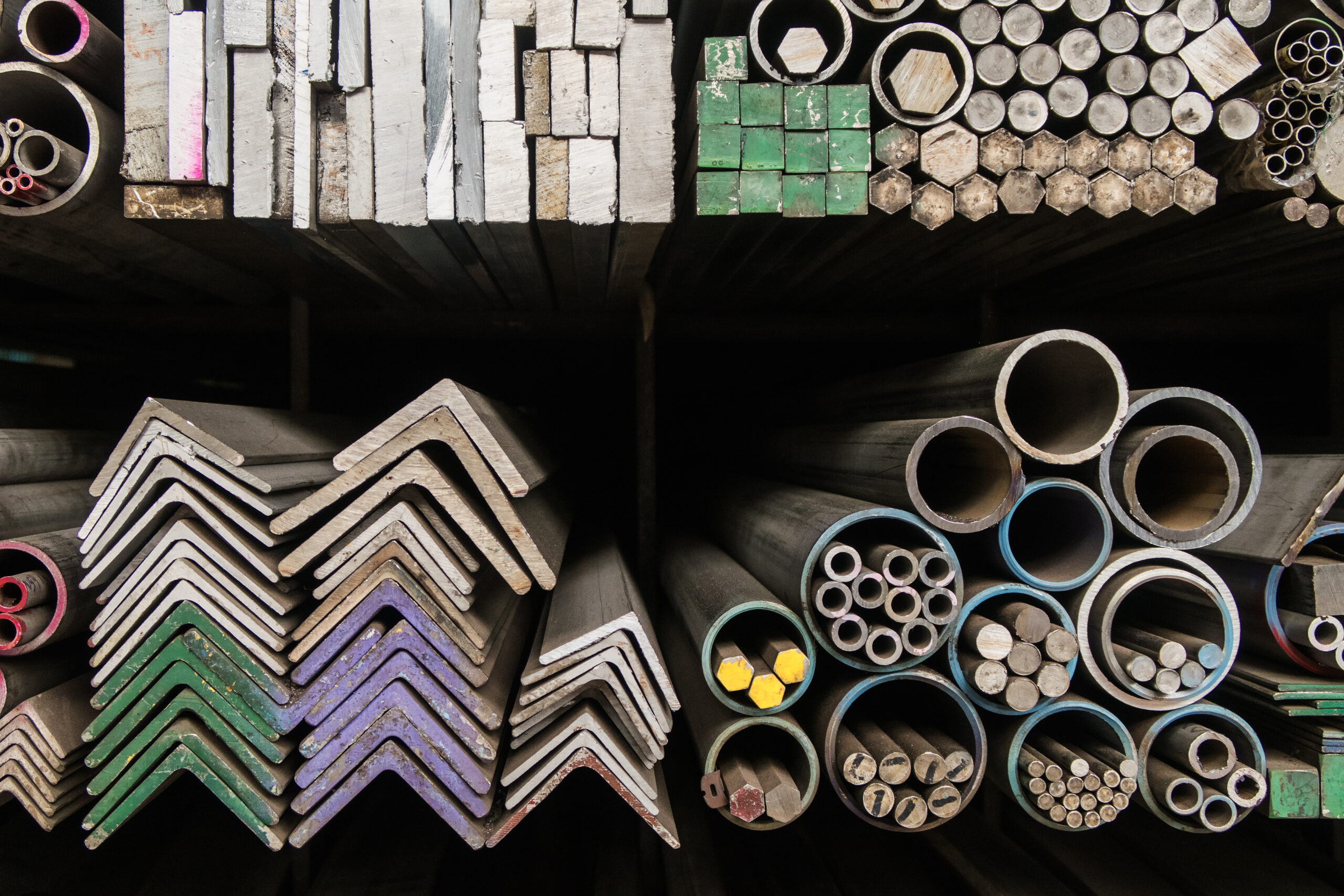Steel is one of the most versatile and crucial materials in various industries due to its strength, durability and malleability. Steel mainly consists of iron and carbon, however, modern steel is much more complex than this. The strength and characteristics of steel are determined by the concentration of carbon and iron, or the inclusion of other elements. This is what allows steel to be used in an infinite number of scenarios.
So, what are the different types of steel?
The different types of steel are primarily classified based on their composition, heat treatment and intended use. Here are the four main groups which steel is graded and classified into:
Carbon Steel:
Carbon steel is the most common type of steel and is primarily composed of iron and carbon. The carbon content can range from 0.04% to 2.1%, influencing the material’s hardness and strength. Low carbon steel is ductile and easily weldable, while high carbon steel is harder and more suitable for applications requiring strength.
Examples of Carbon Steel:
- Structural steel – S355J2+N, S355NL, S46NL
- Pressure Vessel – P355NL2, P265GH
- High Strength – S690QL
- Wear Resistant – 400HB,500HB
- Offshore – S355G10+N, S355NLO/MLO
- High Carbon – C45/EN8
- Weathering Steel – S355J2W+N
Alloy Steel:
Alloy steel incorporates elements such as manganese, nickel, chromium, and vanadium to enhance specific properties. These alloys increase strength, corrosion resistance, and heat resistance. Alloy steel is widely used in construction, pipelines, and automotive components.
Stainless Steel:
Stainless steel is known for its corrosion resistance, stainless steel contains chromium and often nickel. The most common types are austenitic, ferritic and martensitic stainless steels. Stainless steel is prevalent in kitchen appliances, cutlery and industrial applications where resistance to rust and corrosion is crucial.
Tool Steel:
Tool steels are designed for making tools, such as drills, cutting equipment and molds. They possess high hardness, wear resistance, and heat resistance. The presence of tungsten, molybdenum, and vanadium help improve heat resistance and overall durability.
Other types of steel include:
High-Speed Steel:
High-speed steel is known for its ability to withstand high temperatures without losing its hardness. High-speed steel is often used for cutting tools in machining applications, where the material must maintain its cutting edge at elevated temperatures.
Weathering Steel:
Weathering steel contains alloys like copper, nickel, and chromium. It develops a protective rust layer over time, making it suitable for outdoor structures like bridges and sculptures, eliminating the need for painting.
Galvanised Steel:
This steel is coated with a layer of zinc to enhance corrosion resistance. Commonly used in construction, automotive, and household appliances, galvanised steel provides a protective barrier against rust and other environmental factors.
Understanding the different types of steel allows engineers and manufacturers to choose the most suitable material for specific applications, ensuring optimal performance and longevity.
Contact P&D Northern Steels today
If you are interested in purchasing steel, or would like to find out more about our steel stockholding services, please use the contact form. Alternatively, you can call us on 01706848811 or email sales@pdnorthern.co.uk.
